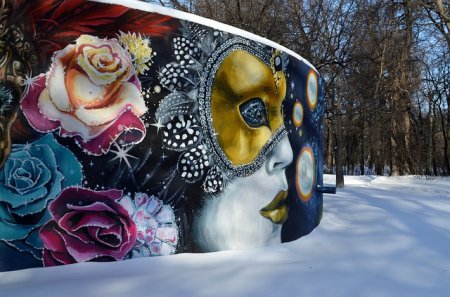![]() Home
Winnipeg
Home
Winnipeg
|
|
Welcome to Canadian Relocation Winnipeg, the Online Guide for people Relocating or Moving to Winnipeg, organized by Categories of interest from Arts to Weather. You don't have to browse the Web; we have done it for you. 
Winnipeg is the capital of Manitoba, at the confluence of the Red and Assiniboine rivers.It is the main commercial and distribution center for a large area in which grain, livestock, and minerals are produced. Provincial government operations, manufacturing, and tourism are also integral parts of the city's economic base. The city is served by major railroads and highways and by an international airport. As of the Canada 2016 Census there were 705,244 people living in Winnipeg proper, with approximately 778,489 living in the Winnipeg Census Metropolitan Area (CMA). Thus, Winnipeg is Manitoba's largest city and Canada's seventh largest city. Furthermore, the city represents 54.9% of the population of the province of Manitoba, the highest population concentration in one city of any province in Canada. Winnipeg is a cosmopolitan city with a number of beautiful parks and varied cultural facilities. It is the site of the University of Manitoba, the University of Winnipeg (1871), the Canadian Museum for Human Rights, and the Royal Winnipeg Ballet, the Manitoba Theatre Centre and the Ukrainian Cultural and Educational Centre. The city is home to Manitoba Opera and modern-dance companies, Assiniboine Park Zoo, a modern convention center, a horseracing track and professional football and hockey teams. The city is the scene of the Folklorama, an annual multiethnic event. The city has become a manufacturing, wholesale and commercial hub. With the rejuvenation of downtown, Winnipeg is an inviting place to do business, shop, reside and relax. 
Winnipeg lies at the confluence of the Red and Assiniboine rivers, 40 miles (65 km) south-southwest of Lake Winnipeg and 60 miles (95 km) north of the Minnesota (U.S.) border. After the establishment of Fort-Rouge in 1738 on the site by the French voyageur La Vérendrye, there were later trading posts on the site: Fort Gibraltar (built by the North West Company in 1804) and Fort Garry (by the Hudson's Bay Company, 1821). These, together with the Red River Settlement of Scottish colonists (founded in 1811-12) formed the nucleus of the new city, the name of which was taken from that of Lake Winnipeg and derived from the Cree First Nation words win nipee meaning "muddy water". The arrival in 1881 of the Canadian Pacific, the first Canadian transcontinental railroad, led to Winnipeg's becoming the major grain market and warehousing and distributing point for the Prairie Provinces. The city also serves the mining districts of the north and is now one of Canada's largest industrial, communications, commercial, financial, and insurance centres. The city's economic activities include flour milling, meat-packing, printing, food processing, brewing, and the manufacture of clothing, automobiles, and farm machinery. Winnipeg's industrial growth has been stimulated by the availability of cheap hydroelectric power (from plants on the Winnipeg River) and natural gas and of excellent transportation facilities. A major junction on two transcontinental rail lines and the Trans-Canada Highway, Winnipeg also has a busy international airport. Following disastrous floods in 1950, the 30-mile (48-kilometre) Red River Floodway was built (completed 1967), allowing that river's floodwaters to bypass the city. A cosmopolitan city of many ethnic groups, Winnipeg dominates Manitoba's cultural life. It is the home of a symphony orchestra, the Royal Winnipeg Ballet, and the Manitoba Theatre Centre. It is the seat of the University of Manitoba (1877) and its affiliated colleges of St. Boniface (1818), St. John's (1866), St. Paul's (1926), and St. Andrew's (1946) and of the University of Winnipeg (1947, formerly United College). The provincial Legislative Building (1920) is a neoclassical structure with the well-known Golden Boy (a bronze statue of a youth carrying a torch in his right hand and a sheaf of wheat over his left arm) on top of its dome. The city's Centennial Centre includes the Manitoba Museum of Man and Nature and a planetarium. Winnipeg plays host to an annual (August) international festival of folk arts. Located at the confluence of the Red River and Assiniboine Riverin the heart of downtown Winnipeg, The Forks has been meeting place for over 6,000 years. Today, The Forks offers dining experiences, incomparable shopping, a constantly changing slate of entertainment and events, and many unique attractions that encompass the site’s natural, historic and man-made features. In January 2008, the Guinness Book of World Records recognized The Forks as the home of the longest skating rink in the world. The 8.54-kilometre-long ice rink on the Assiniboine River and the Red River is almost 1 kilometer longer than the previous record-holding rink. Incorporated 1873. SHARE THIS PAGE ON: |
|
![]() Home Winnipeg
Home Winnipeg